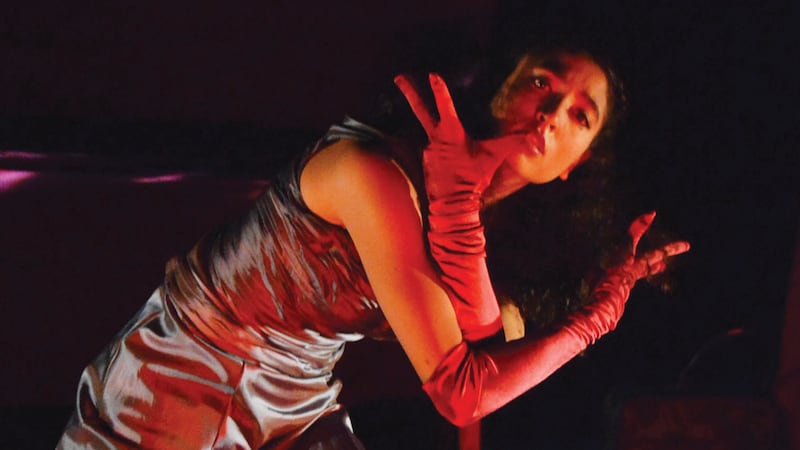Hotel Gone starts in chaos. Actor Amy Katrina Bryan emerges in a dark theater and sits down at a drum kit on the stage. When she starts to play a beat, five other actors frantically dance onstage in their undergarments. They change into dresses and suits in front of you, thereby assuming their first of many shifting identities.
Imago Theatre's new play only gets more wild from there. Hotel Gone has no dialogue, and the characters are all nameless. Created by Imago artistic director Jerry Mouawad, it's as much a dance show as it is a play, partially set to live music performed by the actors. The cast members change in and out of clothing on the two racks that frame the stage, allowing Hotel Gone to swiftly shift from one strange scene to the next. In one moment, ensemble member Nathan H.G. dances alone onstage with a top hat and cane. Later, the cast stand in place and shuffle their feet to "Holiday in Cambodia" in what looks like a punk version of Riverdance.
It's as manic as it sounds. Everything in Hotel Gone is a blank canvas. The only indication that the performance is set in a hotel room comes from its title and the program notes. What's actually onstage could have been lifted from a nearby thrift store–cluttered clothing racks, a couch and some chairs around a table. Like the characters, the set is also malleable, and the cast frequently move around the wheeled furniture during the dance sequences.
Related: Imago Theatre's "Savage/Love" Is An Abstract Amalgamation of Love Poems
Occasionally, recognizable characters emerge. Early on, H.G., Leif Schmit and Kayla Banks act out a wordless love triangle. H.G. and Schmit take turns dancing with Banks, but after she retreats from both, H.G. stabs Schmit. It's an affecting moment, but those recognizable characters evaporate shortly after they materialize.
Hotel Gone seems more interested in re-imagining itself than probing the depths of its choices. Later, Schmit, who has been clad in a suit for most of the play, dons a bright red cocktail dress. It seems like it's meant to be a subversive revelation, but with a lack of consistency in character development, it plays out like a simple costume change.
There's something to be said about live theater built on uncertainty and abstraction. Not fully grasping what you see can force you to piece together your own definition. But ambiguity needs to be balanced with accessibility. In order to make us want to do the work of figuring it out, a play has to be willing to reach out to its audience with an access point that offers some emotional payoff.
Hotel Gone has no such access point. The characters shift so often, it's as if they have no identity rather than a shifting identity. The result is a muddled mashup of characters you end up referring to as "the one with the top hat" or "the one who started singing 'As Time Goes By.'"
Hotel Gone is the kind of show that could exist with or without an audience. It seems more interested in pure experimentation than finding emotional common ground with its audience.
SEE IT: Hotel Gone is at Imago Theatre, 17 SE 8th Ave., imgaotheatre.com. 7:30 pm Thursday-Saturday, Dec. 21-23. $10-$20 sliding scale.
